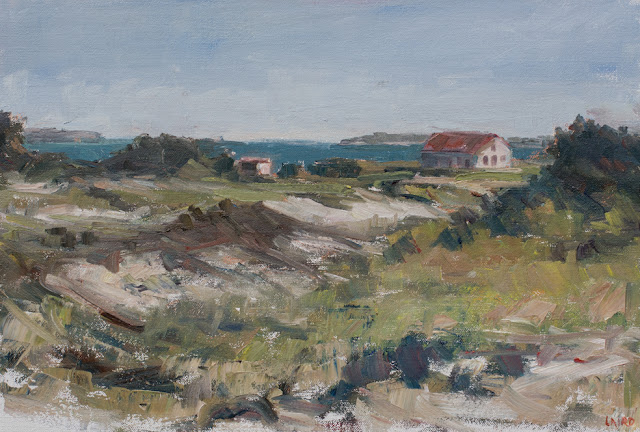 |
| ©Theresa Grillo Laird - Opal Beach - oil on canvas - 24x30 (sold) |
I know intuitively when I'm not hitting the mark. I'll bet most artists do. No matter the praise, I know when the visual meets or even comes close to the sensation that's the heart of the painting.
So, why look at the work of other artists?
Here are just a few among the many good reasons. In the isolation of the studio, it's good to look at other artist's work both past and present to remind you that you are part of a community of artists stretching back through the ages who have left their contribution on the earth for the enjoyment of all, past present and future.
In more practical terms, you can find or create a solution to a painting problem either by seeing how someone else solved it or just by being inspired by their work to a new direction of thought.
Often, looking at other's work rekindles the fires of dreaming that can grow dim with disappointments. Whether the dream is places you want to go, or new methods to try to bring your vision into reality, you need to dream. Without dreams there's no creation.
When isn't is beneficial to examine the work of others?
It's probably not a good idea during those times of temporary insanity when you lose all belief in your ability. The solution to that sorry state of affairs is to keep working and eventually you'll have the proof in front of you that you do know what you're doing.
It also not helpful to search elsewhere when you're in a negative state of comparing yourself to others rather than a place of open minded exploration.
I will keep studying the work of other artists, remembering to look forward to the exciting possibilities in front of me, and not banking on painting goals already reached.



